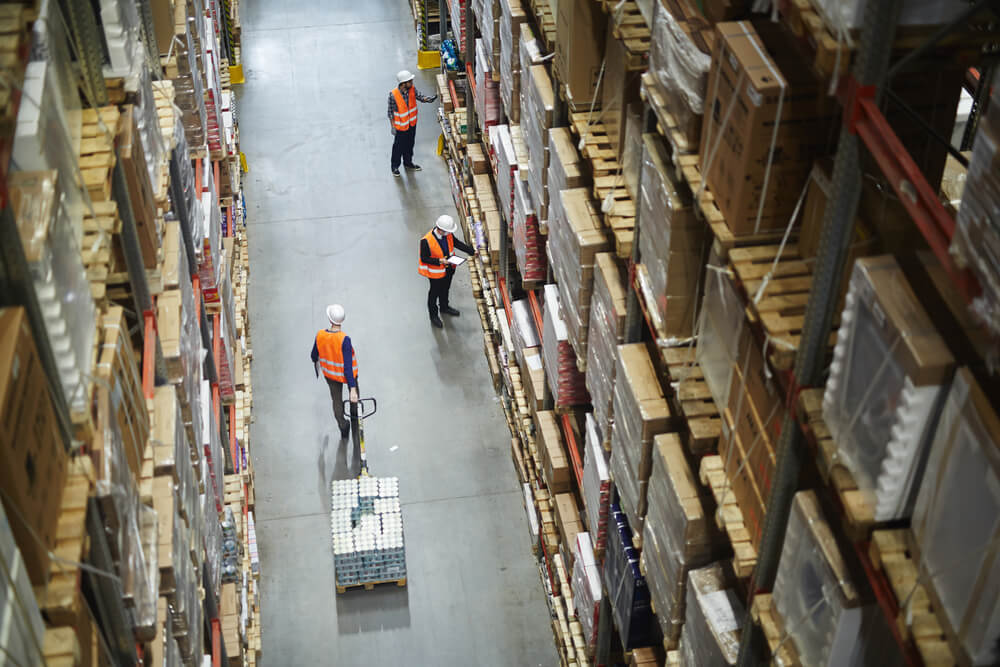7 Manufacturing Scheduling Strategies
Scheduling is one of the cornerstones of an efficient manufacturing business. It is important, however, to find a manufacturing scheduling method that would suit your company best.

Why is scheduling important in manufacturing?
Manufacturing scheduling is all about process flow and resource allocation. If you don’t maximize those two variables, you won’t achieve a level of output consistent with all the money and time you put in. That’s why it’s essential that you establish and perfect your manufacturing scheduling strategies.
But what exactly is production scheduling? What are some common manufacturing scheduling strategies? And how can you make manufacturing scheduling as easy as possible?
7 Manufacturing Scheduling Strategies
1) Forward Incremental
Forward scheduling is a manufacturing scheduling strategy that proceeds forward along the production line from the initial receipt of the order and chronologizes the operations needed to fulfill that order.
The main drawback of forward incremental planning is that it disregards actions already in progress. So, if you have a resource that is already occupied on another order, then this strategy overlooks that information.
2) Backward Incremental
Think of backward scheduling as the opposite of FIP. A backward incremental planning strategy works backward from the due date and establishes the steps necessary to complete production.
Think of a bakery that receives an order on Monday for pickup on Friday afternoon. The order needs to be fresh Friday afternoon, so the baker plans to mix everything up Friday morning. That’s backward incremental planning in a (very simplified) nutshell.
Read more about Forward Scheduling and Backward Scheduling in Production Planning.
3) Chase
Chase strategy is all about fulfilling the demands of the market. You set your production to match orders without any leftovers.
With the chase strategy, you minimize your inventory and keep the input costs low until a client places an order. Chase strategy is common in companies that don’t have a lot of expendable income, a typical small manufacturer, or those that deal in perishable items.
4) Infinite Capacity Planning
With infinite capacity planning, you attempt to manually match the volume you’re able to produce with the demand, so your production line contains no downtime or bottlenecks.
This strategy is often employed when using pen-and-paper, or in simplistic planning software.
The biggest downside is that you must manually make sure that you do have all the resources available for the planning period, which is a big possibility for human-error, especially with complex products.
5) Finite Capacity Planning
Opposite to infinite capacity planning, with finite capacity planning, you have a software system that matches the planned production capacity for each day with the actual volume that you’re able to produce.
Capacity planning – as its name suggests – revolves around capacity to achieve efficiency and profitability.
6) Make-To-Stock
A make-to-stock strategy is a strategy that considers the cyclical demands of the market and the end user and adjusts production accordingly.
Many manufacturers use a make-to-stock strategy when they roll out a new product. They make enough to fill retailer’s shelves so that end users can access the product quickly and easily without delay. This type of production helps keep demand stable. That, in turn, makes it possible to be more consistent with your output.
A commonly used strategy, which is a variation of the make-to-order, is the “level” strategy which aims to produce the same number of units regardless of fluctuating demand.
Here’s an example of level production for a hypothetical pen factory:
- Maximum production is 20,000 units per month.
- Peak demand is 30,000 units per month.
During peak periods, the factory wouldn’t be able to produce enough units to meet demand. Instead, using a level manufacturing scheduling strategy, managers set production at 15,000 units per month throughout the year (instead of reducing and increasing production at various times) in preparation for peak season.
Read more about Make-to-Stock Process Flow and Best Practices.
7) Make-to-Order
The make-to-order manufacturing scheduling strategy is common among smaller, more agile production facilities. They have the ability to run more customized “bespoke” items to meet demand.
A restaurant is a prime example of a make-to-order manufacturing strategy. They hold their ingredients in inventory until a customer places an order. Then they make the item (a small manufacturing run) according to each customer’s requirements.
These are just a few of the many manufacturing scheduling strategies that you can implement in your facility.
Read more about Make-to-Order Process Flow and Best Practices.
How to efficiently schedule production?
Likely, your best manufacturing scheduling strategy is a hybrid of several strategies presented above. For example, if you combine backward scheduling with Finite Capacity Planning you effectively have an accurate solution for scheduling manufacturing operations for Just-in-Time delivery.
The best way to plan your production operation is with manufacturing scheduling software (MRP software for short). Yes, you could use pen and paper, but that’s like getting rid of the automation in your facility and going back to the assembly line of the early 1900s.
MRP software, for example, provides accurate automatic planning that results in a practical and efficient production schedule. It also, among many other features, might allow you to re-schedule dynamically by dragging and dropping manufacturing orders and operations in calendars or Gantt charts. These powerful time-saving tools mean the difference between a well-organized, cost-effective production line, and a chaotic, unprofitable one.
You may also like: Production Planning Methods




